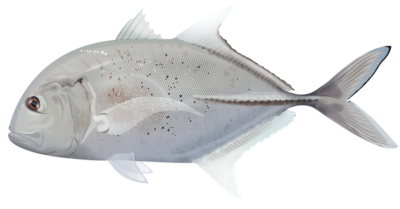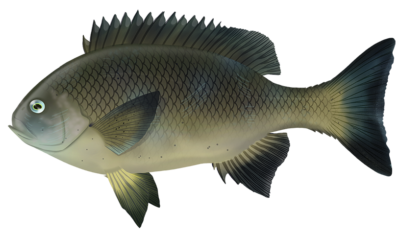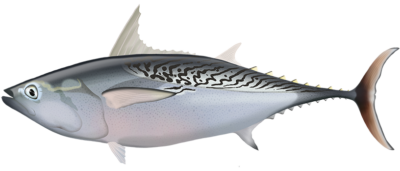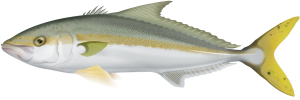Discover
Fishing Ocean Rock Environments
Fishing Ocean Rocks
Fishing from ocean rocks is a popular recreational activity in Australia, offering anglers a chance to target a wide variety of species in a unique and challenging environment. The vast and rugged coastline of Australia provides ample opportunities for rock fishing, with many popular spots located in New South Wales, Victoria, and Western Australia.
However, it’s important to note that fishing from ocean rocks can be dangerous and requires a certain level of skill and experience. The unpredictable nature of the ocean, coupled with slippery and uneven terrain, means that anglers must take extra precautions to stay safe. This includes checking weather and ocean conditions before heading out, wearing appropriate footwear and clothing, and always fishing with a partner. Despite the potential hazards, fishing from ocean rocks can be an incredibly rewarding experience for those willing to put in the effort and take the necessary precautions.
Rock fishing is more than just an adventurous challenge, its the opportunity to take in incredible scenery, improve your fishing skills and catch incredible different species year round.
Quick Facts
- Ocean rock fishing in Australia offers opportunities to catch a vast array of species, ranging from snapper, kingfish, and mackerel to bream, luderick, and groper, making it a popular method for those seeking variety and challenge.
- Ocean rock fishing can be exhilarating but it is also one of the most dangerous sports. Unexpected waves, slippery rocks, and isolation are just some of the hazards. In some areas, life jackets are mandatory, and safety should always be a top priority.
- You can engage in ocean rock fishing throughout the year in Australia, as different species become more active in different seasons. From snapper in spring and early summer to kingfish in the warmer months, there’s always something biting.
Common fish caught from ocean rocks
Giant Trevally are known for their hard fighting abilities and can provide a real thrill. Popper lures can be effective for attracting them, with a fast retrieve and erratic action mimicking fleeing prey.
These fish are known for their fighting ability and can be found in rocky areas close to the shore. It’s important to keep an eye on the tides and fish at the right time, as rock blackfish are more active during certain tidal movements.

Where and how to fish ocean rocks
Ocean rock fishing can be very thrilling but can be hazardous, selecting the right spot requires careful consideration of multiple factors, understanding local marine life, and respecting the ocean’s behaviour.
Start by identifying rocky outcrops or headlands that project into the ocean, as these points usually offer access to deeper waters. Use satellite maps or consult local fishing forums for an initial overview. Once on site, observe the water for signs of fish activity, such as diving birds or surface disturbances, which suggest the presence of baitfish and larger predator fish. Pay close attention to the underwater topography – areas with sudden depth changes or the presence of underwater rocks and reefs often serve as habitats for smaller marine life, in turn attracting larger fish species.
The physical environment and water conditions also play key roles. Look for channels between rocks or gutters, which are deeper sections of water that fish use as pathways during tide changes. Observe water clarity and color changes, which can suggest depth variations or underwater structures. Note the direction of the current – fish often face into the current, so casting your line to drift naturally with it can enhance your chances of a catch.
The best bait and tackle for fishing from ocean rocks
Choosing the correct bait and tackle is a important aspect of successful rock fishing in Australia. The species you aim to catch will dictate your choice of bait and lures. Live bait is typically an excellent choice as it mirrors the natural food source of many fish species. Common live bait options include prawns, worms, herring, mullet, pilchards, and squid. Always ensure that your live bait is fresh and lively to attract more fish.
Artificial lures can also be quite effective for rock fishing. Soft plastics, like jerk shads, paddle-tail minnows, or curl-tail grubs, are adaptable and can be employed to target various species. Experiment with different sizes, colours, and retrieval speeds to simulate the movements of injured or escaping prey. For predatory species like kingfish, salmon, tuna, or tailor, metal slices and hard-body lures, including diving minnows or poppers, can be particularly successful.
Regarding tackle, a medium to heavy spinning rod and reel setup is recommended. A rod measuring 9-12 feet with a fast action is ideal for casting lures and dealing with the potentially larger fish species you might encounter. Match this with a 5000-8000 size spinning reel that has a smooth drag system. Braided line in the 20-30 lb range offers sensitivity and casting distance, while a 30-50 lb fluorocarbon leader provides resistance against the rocks and enhances stealth.
Properly selecting and using bait and tackle for rock fishing in Australia can significantly improve your chances of a successful catch across various fish species. A visit to a local tackle shop can provide valuable insights and ensure you are properly equipped for the specific area you plan to fish.

Top Target Species
Fishing for yellowtail kingfish from the rocks can be an exhilarating and challenging experience. These powerful fish are known for their hard fighting abilities and can provide a real thrill for anglers.
To target yellowtail kingfish, it’s recommended to use a sturdy fishing rod with a fast action tip and a strong reel, with a breaking strain of at least 30lb line. Metal jigs or live bait such as squid or yellowtail can be effective, with a sliding sinker rig allowing the bait to move more naturally in the water.

The best time and season to fish ocean rocks
The ideal time and season for ocean rock fishing can fluctuate based on the location and target fish species. However, some general guidelines can be followed to plan your fishing trip for optimal success.
Time of Day:
Typically, the periods of dawn and dusk yield the best fishing results, as many fish species are more active during these times. This is often related to their feeding habits, as several fish feed extensively at night and will be either starting or ending their feeding period during these times.
Tides:
Tidal changes significantly impact rock fishing. Certain fish species are more active during high tide, while others prefer low tide. Generally, the transition of the tide is an excellent time to fish, as the water movement stirs up food, making fish more active. Therefore, fishing two hours before or after high or low tide can often lead to successful catches.
Seasons:
The best fishing times can often depend on the specific fish you’re targeting, as different species have different seasonal behaviours.
Summer (December to February): This is a great time to target pelagic species like kingfish, tuna, and mackerel, which prefer warmer waters. Snapper can also be found inshore during this season.
Autumn (March to May): Autumn is a good time to target luderick and bream. As water temperatures begin to cool, groper can also be targeted, particularly around rocky structures.
Winter (June to August): During winter, luderick and blackfish are commonly caught, and groper continue to be a rewarding target. It’s also worth noting that some anglers report success with tuna and kingfish during the early winter months.
Spring (September to November): As water temperatures start to rise, snapper become more active and are often found inshore. This is also when kingfish, mackerel, and other pelagic species begin to become more prevalent around the rock platforms.
Always remember, these are general guidelines, and local factors including weather, water conditions, and bait availability can influence fishing success. Always adhere to local fishing regulations, including size and bag limits, before setting out.
Rocks fishing safety and regulations
Ocean rock fishing can be an exhilarating experience, but it’s vital to prioritise safety and adhere to local regulations. Here are some key points to consider when rock fishing:
Safety:
Rock fishing can present unique hazards. Being conscious of your environment is crucial, and the following tips can help ensure safety.
Weather and Sea Conditions: Always check the weather forecast and sea conditions before heading out. Rough seas and strong winds can make rock fishing perilous.
Tides: Be aware of tide times and movements. Being stranded or caught unawares by a rising tide on a rock platform can be life-threatening.
Footwear: Wear sturdy, non-slip footwear. Ocean rocks can be slippery and sharp, making appropriate footwear necessary.
Sun Protection: Use sun protection like sunscreen, hats, and sunglasses. The Australian sun can be intense, particularly during peak hours.
Safety Gear: Always wear a life jacket. It is the single most important piece of safety equipment when rock fishing. Even the most experienced swimmers can get into trouble in the unpredictable ocean environment. Also, consider wearing a helmet to protect against accidental falls or being swept onto rocks by waves. Certain states require a life vest by law.
Regulations:
Fishing regulations in Australia vary by state and territory, so it’s crucial to consult local government websites for the most current information. Some general regulations include:
Fishing Licenses: Most states and territories in Australia require recreational fishers to have a valid fishing license. Make sure you have the proper license for the area you’re fishing.
Size and Bag Limits: There are size and bag limits for different fish species to promote sustainable fishing practices. Ensure you’re familiar with the relevant limits for the species you’re targeting.
Closed Seasons: Certain fish species have closed seasons to protect them during their breeding periods. Be aware of any closed seasons for the species you plan on targeting.
Gear Restrictions: Some areas or specific species may have restrictions on the type of gear you can use. Always check local regulations to ensure your fishing gear is compliant.
Marine Protected Areas: There are areas along the Australian coast that are designated as Marine Protected Areas. Fishing in these areas may be restricted or prohibited to protect marine biodiversity.
For the most up-to-date information on ocean rock fishing safety and regulations in Australia, visit the relevant state or territory government websites.
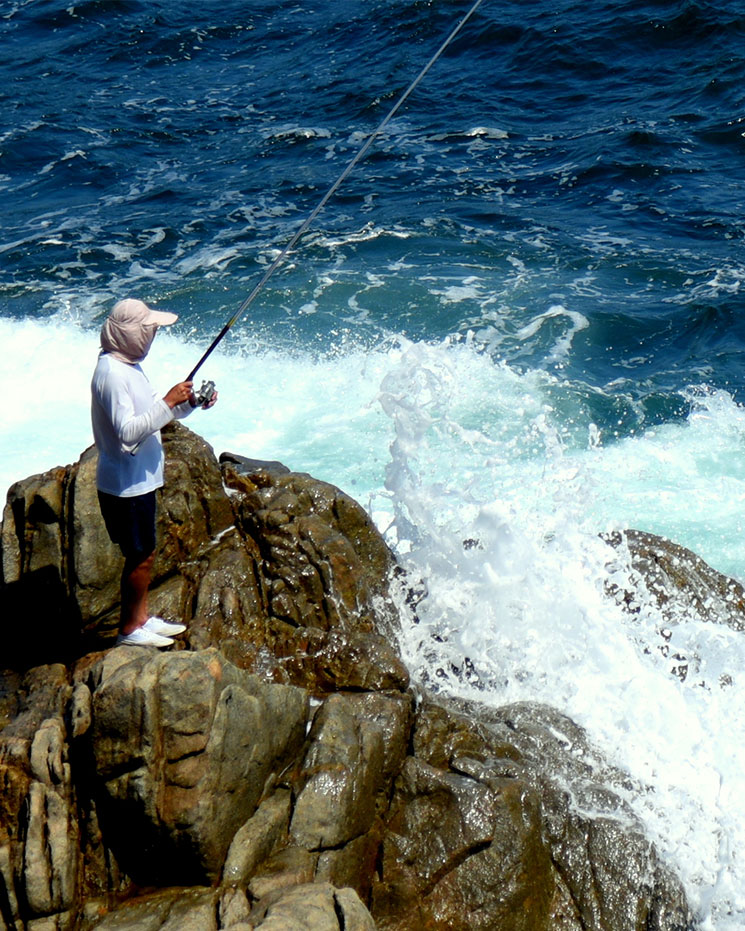
Tips and Tricks for Ocean Rock Fishing
What type of fishing gear should I use for ocean rock fishing?
It’s recommended to use a sturdy fishing rod with a fast action tip and a strong reel to handle the powerful pulls of fish such as snapper or kingfish. Use heavy line with a breaking strain of at least 20lb, and attach a strong leader to prevent your line from breaking on rocks or sharp edges. Lures or baits such as soft plastics, metal jigs, or fresh bait can be effective, but make sure to match your gear and technique to the species you’re targeting.
How do I stay safe while ocean rock fishing?
Always check the weather and ocean conditions before heading out, and never fish alone. Wear appropriate footwear with good grip, such as rock boots or sturdy sneakers, and consider wearing a life jacket or buoyancy vest. Be aware of the tide, waves, and potential hazards such as slippery or unstable rocks, and avoid fishing in areas with rough or high surf. Also, always keep an eye on your surroundings and be prepared to move to higher ground if necessary.
How can I find good fishing spots on the ocean rocks?
Look for areas with deep water close to shore, such as channels or gutters, as these can be prime spots for fish. Also, keep an eye out for underwater structure such as rock ledges or drop-offs, as these can attract a variety of species. Pay attention to the movement of the tide and the direction of the current, as this can help you predict where fish are likely to be feeding.
What should I do if I catch a fish while ocean rock fishing?
When you catch a fish, carefully reel it in and use a landing net to bring it up onto the rocks. Avoid lifting fish up by their gills or placing them on hot, dry rocks. If you plan on releasing the fish, handle it gently and quickly, and release it back into the water as soon as possible. If you plan on keeping the fish, bleed it and store it on ice as soon as possible to ensure the best quality meat.
The use of berley (chum) can be very effective if the bite is slow.
A trail of berley (chum) can attract fish to your area. This can be particularly effective for species like snapper or trevally.
However, to much berley can attract smaller unwanted fish like sweeps, kelpies and toadfish which will create challenges in keeping your bait on the hook.
Search the Australian
Fish & Marine Life Database
Australian Fish & Marine Species Identification – Freshwater & Saltwater Fish, Sharks, Rays and Invertebrates of Australia.
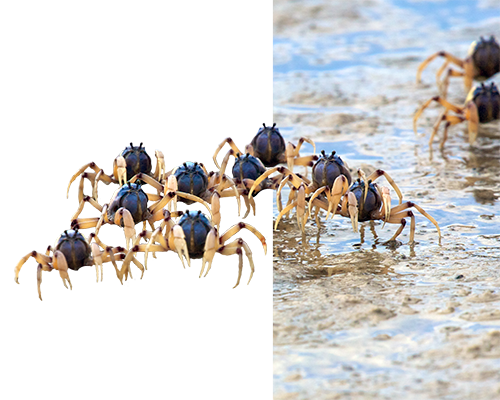
Explore Other Environments
Australia offers an incredible variety of fishing habitats, including coral reefs, rugged coastlines, pristine estuaries, sandy beaches, meandering rivers, and freshwater lakes, providing anglers with abundant opportunities for fishing – Learn more below.
Lake
Sandflat
River
Reef
Breakwall
Beach
Mangrove
Estuary
Discover More
Dive into our resource library to learn fun facts and get information on everything about ocean rock fishing and more. All your Australian marine life and lifestyle resource in one place!
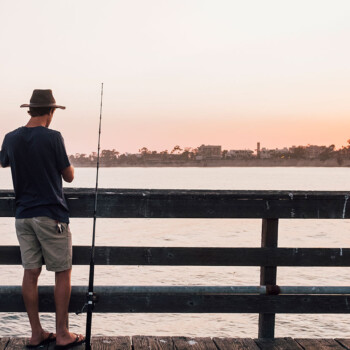
Bait Jig Rig & Variations
Bait jig rigs represent a crucial piece of tackle for the angling world, blending the art of lure design with the...

Running Sinker Rig & Variations
The running sinker rig, also known as the ball sinker rig, is an extremely popular and easy to create rig. There...
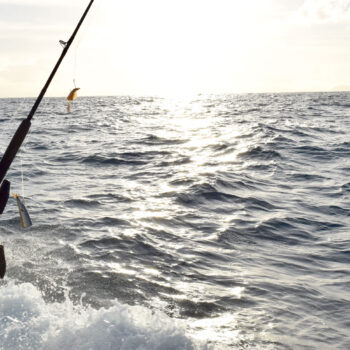
Paternoster Rig & Variations
The paternoster rig and its variations are a popular and easy rig to create. It can be created with single or...

Tips for hiring a boat
Hiring a boat is an excellent way to explore the beautiful waterways of Australia. Whether you want to go fishing,...

Top boating activities
Australia is surrounded by water, with a vast coastline and numerous lakes, rivers, and waterways, making it a...
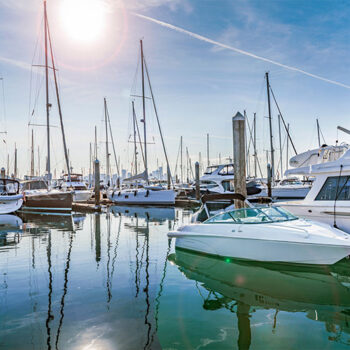
What type of boat is best for me?
Australia is a nation surrounded by water, making boating a popular recreational activity for many Australians....

An introduction to game fishing
Game fishing is a popular recreational activity in Australia. Known for its vast coastline and abundant marine...
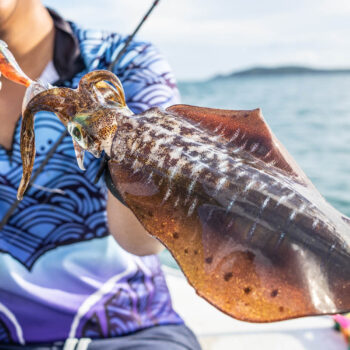
How to catch squid
Catching squid is a popular pastime in many coastal communities around the world. Whether you're an experienced...


